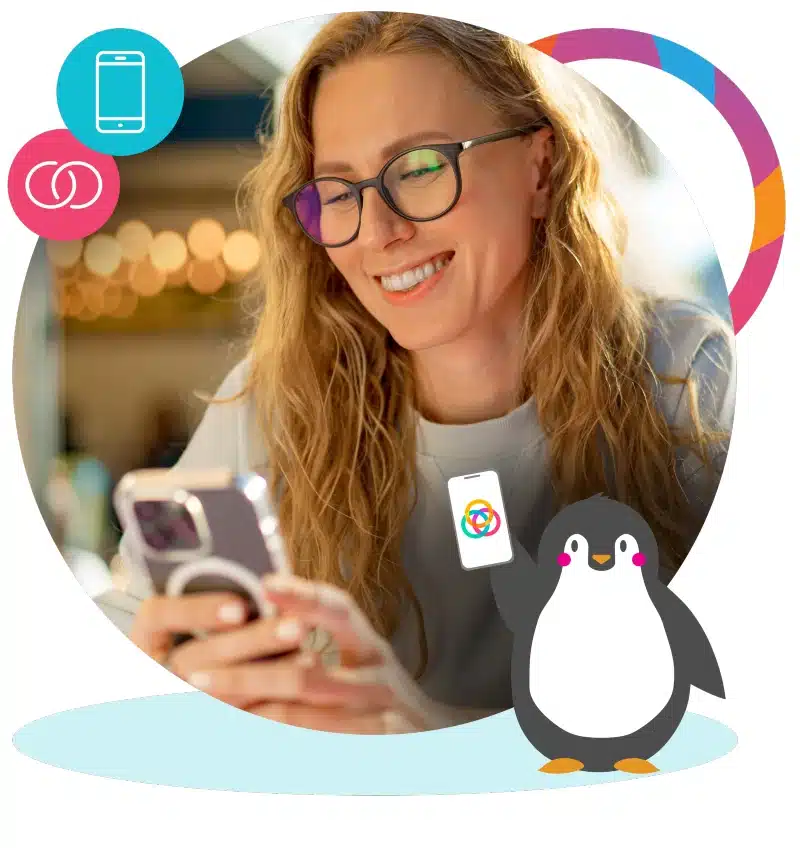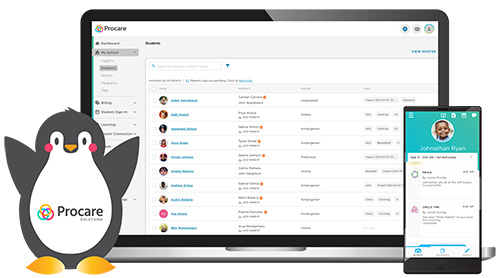This blog was originally published April 19, 2021, and was updated with new information on October 23, 2024.
Childhood behavior management in early childhood education means teaching the children in your care the values and habits they’ll need to work effectively in a classroom, get along with others and achieve their goals as they grow. When this is done effectively, it can be one of the most rewarding aspects of your child care career!
As every parent and early childhood educator knows, kids aren’t born well-behaved! They need supportive, understanding adult guidance and teaching to help them learn to model good behavior and avoid bad behavior.
Let’s take a look at the importance of a good childhood behavior management strategy, and 10 effective tips to manage childhood behavior in your preschool or daycare.

Why is Having a Childhood Behavior Management Strategy Important?
Child behavior management is one of the most important tools you have as a child care provider to make your preschool classroom an effective learning environment. Good behavior reduces disruptions and helps kids stay in sync with you and each other, so that everyone is ready for the activities of the day.
Learning positive behavior is one of the key developmental outcomes that kids can achieve at your child care center. When each child has the guidance that he or she needs to learn how to behave, the child will be poised for success in kindergarten and life.
Finally, ensuring good behavior is an important part of maintaining the safety and reputation of your child care business. Behavioral issues in kids can become safety issues or lead to conflict if left unchecked. Managing childhood behavior and collaborating with parents is the best way to prevent these problems.
10 Early Childhood Behavior Management Strategies

Strategy #1: Set Clear Expectations for Behavior (Specific, Observable, Measurable)
When kids know exactly what good behavior means, it’s easy to follow the rules. Unclear expectations can lead to uncertainty and anxiety. Children will rightly feel it’s unfair to be disciplined for not following a rule that was ambiguous.
Remember that kids are still learning what good behavior means, so they need lots of specifics: “be kind to others” might be too abstract for toddlers, but “let everyone take turns” refers to a real action they can take, and which you can measure objectively.
At the same time, you won’t want to overload kids with so many specific rules they can’t remember them all. Strike an age-appropriate balance between generality and specificity, and help kids along by giving them concrete examples and visual aids.
Strategy #2: Create a Structured Environment with Routines and Schedules
Routines and schedules give kids a sense of security in their environment that leads to confidence, happiness and good behavior. Uncertainty about what will happen or what to do can cause anxiety that produces bad behavior, or leave an opening for children to get distracted and create disruptions.
A visual schedule, reinforced daily, helps kids keep in mind what they’ll need to do next so that they don’t lose focus during transition times. And routines help guide kids through their daily actions in fun and memorable ways that get them excited to do what’s asked of them, whether it’s eating lunch or putting away toys.
Sometimes, a more individualized plan might be needed. Check out this Head Start guide on creating individual support plans for young learners.
Strategy #3: Consider Situational and Environmental Factors
Good behavior doesn’t happen in a vacuum. When you set kids up for success with your classroom management skills, you’ll find that half the job of classroom discipline is already done. A well-organized, harmonious classroom environment reduces stress on kids, and encourages them to maintain that sense of well-being.
Check out the National Center on Child Health and Wellness resource Nurture Them, Nurture Yourself for tips and tools to help you respond positively to a child’s behavior.
For instance, using an age-appropriate organizational system makes it that much easier for kids to put away toys. Consider also how your schedule can help kids find it easy to do their best, such as by not timing quiet activities like storytime right before a meal when kids are naturally getting antsy.
Strategy #4: Encourage Good Behavior with Praise and Positive Attention

Kids need to know that doing their best will be rewarded. Positive feedback shows them that good behavior benefits them too, so they can get excited to be a good member of their daycare community. Plus, it helps them learn what good behavior looks like in practice, by providing examples (both in themselves and in other kids) that they can build into a mental model of good conduct.
Be on the lookout for kids who are cooperating, helping, taking initiative and working to improve their behavior, and be ready with a smile or a “good job.” Best of all, try to offer specific praise that acknowledges the child’s efforts — this really makes kids feel eager to please you again.
Strategy #5: Create a Reward Menu for Good Behavior
A reward chart or reward menu is a great visual way to reinforce the idea that good behavior in the preschool classroom matters and is valued. By letting kids visually see how their actions lead to rewards, you help them get excited to do their best, as well as building the important developmental skill of learning to make progress toward a goal over time.
Strategy #6: Stay in Control with Rational Detachment
As the adult in the classroom, it’s up to you to make sure that you maintain control by not getting angry, defensive or otherwise emotional when bad behavior happens. Projecting these emotions creates shame, blame and guilt, which can cause children to withdraw or continue their bad behavior.
Instead, focus on maintaining understanding and compassion while still reinforcing age-appropriate consequences. Your guidance and good faith will help kids stay confident that they are validated and supported, which leads to better outcomes in the long run.
Strategy #7: Observe and Document Bad Behavior to Understand the Cause
To know how to best address behavioral issues in children, it’s important to record it when it happens. Whether unexpected behavior is a one-off or a recurring issue, taking the time to document it while your memories are still fresh will help you know why it happened and what are the appropriate next steps.
Consider what situation led to the behavior, whether it could have been prevented, and what can be done to most effectively address the behavior given its origin. And with a child care app, you can have the tools you need at your fingertips to make behavior reports and track progress over time to identify patterns and make sure you’re meeting each child’s individual needs.

Strategy #8: Discourage Mild Misbehavior with Active Ignoring
For kids, attention is a reward in its own right. Often, kids will act out in mild ways out of boredom or the desire to be noticed. For this type of misbehavior, drawing attention to it can reinforce the action and create further disruptions.
Actively ignoring mild misbehavior, coupled with consistent reinforcement of positive behavior, teaches kids that if they want your eyes on them, they’ll have to earn it by trying their best. After ignoring, be sure to complete the lesson: keep your eye out for the next time you can positively affirm good behavior in the same child.
Strategy #9: Establish and Enforce Effective Consequences
While positive reinforcement is the primary way to ensure kids live up to your classroom expectations, setting consequences is necessary to prevent bad behavior. Kids will understand and respect your rules when consequences are known in advance, consistently applied and proportional.
The goal of setting consequences is to help kids make progress toward modeling the behavior you want to see. To foster that growth, consequences should have a clear connection to the behavior involved. For instance, if a child is misusing a toy, a natural consequence would be that he cannot use that toy for the rest of the day.
Strategy #10: Collaborate with Parents
Parents are a vital ally in guiding kids toward being on their best behavior. After all, it’s a goal they share, too! Take advantage of the valuable insights parents can offer from their extended one-on-one time with their kids: they can help you know how best to respond to behavior in your classroom.
By working together, you can ensure that your approach to discipline is consistent and effective, without causing confusion with differing expectations. It’s also a great way to build trust and nurture relationships with families, by showing them that you’re their partner in helping their child reach their full potential.
Use Developmentally Appropriate Practices to Improve Behaviors

Helping kids model good behavior in your early childhood center is one of the best ways to maintain a happy child care environment, build relationships with parents and nurture each child to their full potential.
Using developmentally appropriate practices can help you de-stress your teachers and the children in their care.
“It’s age appropriate, it’s individual appropriate. We are stretching the rubber band for children. We are not making it so challenging or so easy that they get frustrated or get over-challenged and give up. It’s meeting them where they’re at,” said Prerna Richards, founder of Together We Grow, about these practices.
Watch her free on-demand webinar Finding Joy through Developmentally Appropriate Practices (DAP): Developing Emotional Intelligence to learn how you can implement these practices in your child care center to deal with challenging behaviors.
And check out her appearance on the Child Care Business Podcast from Procare Solutions, in which she explains how to use DAP to de-stress children and teachers!





